- Home
- Antonia Fraser
Perilous Question Page 21
Perilous Question Read online
Page 21
Grey would refer to what happened in Bristol as ‘the melancholy events’, but in fact they were a great deal rougher than this graceful phrase suggested. Matters were compounded by the reluctance of Colonel Brereton, at the head of the Dragoons, to fire on the crowd because he had spent three years there as a recruiting officer and felt attached to the place. Brereton was even observed shaking hands with the rioters, many of whom he knew personally. Ever since the disaster of Peterloo, there had been some confusion about the relative roles of military and civilians in maintaining order. Brereton made the mistake of withdrawing the 14th Dragoons because they were in his opinion inflaming the populace. There were undoubtedly inflammatory incidents with terrible consequences: Elizabeth Grosvenor heard from her neighbour of a Captain Beckwith of the 14th Dragoons who had been hurt by ‘a great stone thrown in his face’. In a passion, Beckwith gave an immense sweep of his sword and lopped the offending man’s head clean off his shoulders.4
The official estimate was of twelve killed and just under 100 wounded in the course of a battle which started from the moment of Wetherell’s appearance, when he was greeted by cries of ‘The King and Reform’ and ‘We’ll give them reaction’. In fact, the number of rioters who died was probably more like 400, including those burnt to death drunk, even if it could not be accurately estimated. One hundred and two prisoners were taken, eighty-one convicted, thirty-one of them of capital crimes; four were executed and seven men transported overseas. Colonel Brereton was another casualty: he was subsequently tried for his well-intentioned humane behaviour, but shot himself before the trial was concluded.
Most of the destruction took place on the Sunday and Monday, 30 and 31 October. On 1 November The Times, with the aid of a local correspondent on the Globe, revealed that the work of devastation was still going on at a most fearful rate. It was not until 2 November that Lord Althorp was able to comment: ‘Bristol is at last got under.’ He was also able to report a great escape at the Post Office where £300,000 (about £30 million in today’s money) happened to be lodged on the Sunday night, but was rescued by an enterprising man who hired an inoffensive-looking ‘hack chaise’ and took the money away to Bath.5
These were by far the most aggressive riots so far; the question on everyone’s lips, whatever their political persuasion, was: where would it all end? Charles Dickens expressed the countrywide horror in a poem written in November, ‘The Devil’s Walk’, in which the Devil determined to make a few calls ‘to see if his Friends were well’. His first call was the House of Lords where, ‘with mixed feelings of pleasure and hate’, he found a few rich and proud nobles declaring war against ‘the People and Prince’, which reminded him of the Wars in Heaven long ago.
Then away to Bristol he quickly walked
T’indulge in meditation
And he gaily laughed as he slowly stalked
O’er a scene of desolation
The Devil honoured the hand that had done the deed before deciding to return to London at speed to see his old friend Sir Charles . . .6 It was all very well for the Whig Government to take the position stoutly that the violence would end when Reform was carried; for all anyone knew at the beginning of November, the revolution regularly predicted by both sides, most notably by the Duke of Wellington, was on its way. Whatever their point of view, most serious people feared that the Devil would continue to find scenes of desolation for a long time to come as he walked about Britain.
The fact was that law and order was a serious problem for the authorities at this point. There were historic bodies such as the civil magistrates; but the police force was in its infancy and the country was by no means overrun with troops. The effective strength of the Army in Great Britain, including Ireland, at the end of 1831 has been estimated at just over 25,000, with about 3,500 officers in addition; the cavalry were something under 5,000, the footguards under 4,000, and the rest made up of infantry.7 The result was that unusual activity in one district was liable to cause a famine of protection in another. As Sir Willoughby Gordon, the Quartermaster General, drily observed about the lack of disposable forces in and around London: ‘We need not fear a Military Despotism at least.’ This had been seen clearly during the October riots when General Bouverie in Manchester declined to dispatch troops for Nottingham and Derby, urgent as the need was, because he did not feel he could safely detach anything from his own district. Meanwhile Colonel Thackwell in Nottingham sent a detachment to Derby, only to find himself in need of troops as the rioters tore apart Nottingham (including the Castle).
There was a further complication: were the existing troops loyal? Loyal to the Government that is; Brereton’s reluctance to fire, animated by feelings for the neighbourhood he knew, has been noted. A speaker at a meeting of the National Union of the Working Classes in Manchester in late November declared that the soldiers, ‘though they did happen to have scarlet coats’, had feelings in common with the people, as well as having fathers, brothers and friends among those standing before them. There were all kinds of rumours of muskets ordered by the rioters – one in particular concerning a gunmaker called Riviere convinced the Duke of Wellington, even if it proved to have no foundation when it was checked. Similarly stories of disaffection among the troops themselves were rife. The soldier Alexander Somerville reported these widespread rumours in his memoir, adding that there was no proof of their reliability.8 But of course in a volatile situation it was what was generally believed that was important in guiding popular reaction, rather than the actual truth.
The great estates took precautions. The incendiarism of the previous year had been a frightening experience; now there was a new element in the destruction among the rioters, the feeling of political justification. Sir Robert Peel had expressed the best-case scenario from the Tory point of view: there was yet a hope that the propertied class, ‘by diligently reading the lessons which have been written in blood at Bristol’, might learn the risk – or rather ‘the certain price’ – of revolutions. He referred to the disgust which must be felt at the ‘whole reptile tribe of spouters at public meetings’ led of course by Thomas Attwood and his like. As it happened, Drayton Manor, the country seat of Sir Robert Peel, was in a peculiarly exposed position, centrally placed in the Midlands industrial district, with Derby to the north, Nottingham north-east and Birmingham only ten miles south-west. In a less optimistic mood, Peel imported carbines and announced that he intended to defend his home as long as he could. Sir John Hobhouse wrote to the Tory leader of the House of Commons, pointing to the domestic style of the country houses built within the last 300 years: none of the owners had ever dreamt of being obliged to provide against ‘the attack of the mob’.9
At Belvoir Castle, home of the Tory Duke of Rutland, cannons and one ‘long gun’ were set up on the North East Terrace, which was specially paved for their reception, under the instruction of a Sergeant John Kirkby.10 * A room in the Round Tower was fitted up as ‘an Arsenal’. The team of estate carpenters were trained to operate the guns. These were not the first precautions on the Rutland estates in the Midlands: there were those staves bought for Special Constables in January and recently, in October, the watchmen had been provided with flints and gunpowder. But cannons set to dominate the surrounding countryside sent the clearest message yet: no one could attack this fortress with impunity even though some were expected to try.
There was another aspect to it all. Richard Norman, manager of the estates, made a report to the Duke on 6 November in which he stressed the connection of poverty to rioting.11 Described as ‘of tall and noble presence, elegant and dignified in manner’, the 5th Duke of Rutland was ‘singularly courteous to everyone he met’; this paragon of an aristocrat was also ‘a philanthropist in his neighbourhood’. Thus the Duke had contributed generously to the treatment of the poor by the parishes, yet the allowances being made to them were dismally small – six shillings a week for a man and his wife, one shilling and sixpence per child per week. This meant that the administrators of
the parish of Waltham, for example, were actually pocketing money.
As a magistrate Norman intended to allow twelve shillings per week, and he hoped the farmers would respond with similar generosity, whether they employed the men on the farm or the road, lowering their rents. ‘And as you have nobly done Your Part,’ Norman told the Duke, ‘I trust You will stand by me in doing but Justice to the Poor.’
Nevertheless, for all this high-minded local charity Norman was clearly in a state of apprehension about ‘the greatest Excitement prevailing in the Minds of the People’. Only ‘a Spark’ was wanting to cause a general combustion. He did however question whether the political unions might not actually be a force for good in suppressing tumult – given that the people enrolled as unionists had ‘the security of Property at heart’. This was the Attwood message of peaceful protest making itself felt. All the same, Norman ended on a note which summed up clearly what the majority of the property-owners and their households were thinking: ‘We cannot in this Moment, look forward a Week without Alarm.’
Guy Fawkes Day, celebrated with bonfires and the burning of effigies ever since the uncovering of the Gunpowder Plot in 1605, fell conveniently – from the point of view of the rioters – a few days later. Originally Parliament had focused on the Catholic elements in the conspiracy and its official Anglican prayers on the day were redolent of anti-popery, with references to ‘Popish treachery’ and the Royal Family (in 1605) being led ‘as sheep to the slaughter’. In the 200-odd years which had passed since the death of Guy Fawkes and his Catholic co-conspirators, things had moved on; it had gradually become customary to burn effigies of current hate-figures rather than the original villains.12 There was indeed some dramatic irony in the fact that it was now the Anglican bishops being execrated on 5 November, a day originally planned specifically to denounce the Pope of Rome and his accomplices.
As the freethinker Richard Carlile had pointed out concerning the twenty-one prelates who had voted to reject the Bill, that number voting the other way would have been enough to pass it, given the 41 majority for defeat. ‘The Bishops have done it,’ he declared sardonically. ‘It is the work of the Holy Ghost.’ Thus on 5 November 1831 bishops’ mitres took the place of Guy Fawkes’s traditional black hat crowning the stuffed figures on the bonfires. In Huddersfield, according to the Poor Man’s Guardian, there was a ceremony of ‘rather novel description’ when around 15,000 or 20,000 people paraded with an effigy of a bishop ‘as natural as life’, and it was said that no funeral was ever conducted with greater awe and solemnity. One man dressed up as a priest himself and declaimed: ‘Ho! All ye people of Huddersfield . . . For lo! and behold! Here is a great, fat, bloated, blundering bishop whom we have bartered for the poor, deluded, murdered Guy Faux [sic].’ The only light note was struck by the ‘rueful expression’ on the face of the burning bishop. A subversive rhyme was chanted:
Good Lord! put down aristocrats
Let Boroughmongers be abhorred
And from all tithes and shovel hats
Forthwith deliver us, good Lord!
Yet it was noted that the streets cleared quietly after ten o’clock when the flames had died down.13
Taking advantage of the traditional date, there were many more such demonstrations countrywide where it was sometimes difficult to draw a line between a bout of popular disaffection, often for local causes, and some more violent intention connected to Reform. In Dorset Mary Frampton had noticed that during their demonstrations, ‘the minds of the common people’ were ‘wickedly excited’ by suggestions that Reform would give them meat as well as bread in abundance, all at a much cheaper price than normal.14
In Exeter, Bishop Henry Phillpotts was already a target by reason of his notoriously anti-Reform stance; now his effigy was ostentatiously burnt. A ‘tall, finely formed’ figure of a man, with an imposing, lofty forehead and ‘dark hair like the quills of the fretful porcupine’ in the words of the parliamentary journalist James Grant, this was one ‘Guy’ which was unmistakable to the people of Exeter. It has to be said for the Bishop’s sangfroid under the circumstances that he explained his toleration of the burning to the Duke of Wellington as follows: far from being a sign of weakness, it was simply the most convenient way of getting rid of the effigy, which would otherwise have hung about awkwardly. Nearer home, the Duke himself, together with the Duke of Cumberland, was burnt in effigy at Tyburn, near Marble Arch. Phillpotts’s efficiency was, however, matched by Wellington’s composure. On 8 November he told the Deputy Governor of Dover Castle loftily: ‘In respect to insults to me, those who wish to insult me are perfectly welcome.’ He added: ‘I defend myself if they attempt injury. . . .’15
*
Back in London the Cabinet were far from united on what should be done. It was the question, posed crucially by Lord Lyndhurst in the House of Lords, to which some answer had to be found. Could the Bill really not be moderated – that was the right soothing word – in some way so as to bring in enough peers to pass it in its (comparatively) new form? A little group of Tory peers was beginning to take shape who would be known as ‘the Waverers’; prominent among them were Lord Wharncliffe and Lyndhurst himself. Given that you only had to ‘turn’ twenty-one votes (and of course they did not necessarily have to be bishops), there was a body of opinion in the Cabinet, including Lord John Russell himself, Melbourne and Palmerston, who believed this must be the reasonable way to go.
The first debate concerned the date of the next meeting of Parliament. Grey, the Duke of Richmond and Lord Palmerston thought 6 December – the date generally proposed – was too soon. They were defeated; Lord Althorp was impressed by Grey’s dignified bearing in the face of his failure. In any case the state of the country meant that the arguments for urgent action had been mightily reinforced. The Prime Minister was frank about it in his communication with the King: the recall was against his own wishes or, as the Cabinet minute put it which was sent to William IV, the three dissenters, ‘though they were of the opinion that it would have been better to continue the prorogation till the beginning of January’, acquiesced in the advice ‘which is thus humbly submitted to your Majesty’.16
There was also an appalling scene at the Cabinet dinner on the eve of Parliament when Lord Durham started to insult his father-in-law Grey in a way that bordered on the mad. Grief had not improved Durham’s excitable, even morbid temperament. Only a week earlier he had written to Grey, thanking him for all his kindness to him over the death of his son. Now he issued the most brutal attack on him, wrote Althorp to his father, that he had ever heard in his life. Lord Melbourne, more crudely, said that if he had been Lord Grey, he would have knocked Durham down.17
Durham accused Grey of keeping him in London while his son was dying, saying that he, Durham, would be disgraced if there was any alteration in the move towards Reform. (This was quite unfair, commented Althorp, because the Bill was essentially the same.) The deeply mortified Grey responded that he would rather work in the coal mines than be subject to such attacks. ‘And you could do worse,’ responded the noble colliery owner. Then Durham left the room. If there were two Durhams, quite unalike, as Lord Holland once suggested, this was certainly Durham in his most terrible mood – however understandable. It was the measure of his instability at this time that, although Althorp believed he would instantly resign, Durham proceeded later as if nothing had happened.
Meanwhile the stately dance with and round the King – with sidesteps in the direction of the Radicals – continued. In the general state of perturbation throughout the country, not everyone took the enlightened attitude of the Duke of Rutland’s estate agent, Richard Norman, that the unions might be a force for pacification. There were rumours – more rumours – about the existence of armed bodies and menacing military organization. Guns, it was said, were being concealed in walking-sticks. The Tory-inclined newspaper the Standard suggested that the Birmingham Political Union had actually played some part in the recent ‘melancholy events’, in Grey’s ph
rase, at Bristol. This was certainly not true; in fact it was the Bristol riots that prompted Thomas Attwood to suggest that military organization of some sort might be a sound plan for the Union, in the face of such hostility. In Birmingham, 10,000 or 15,000 men would be able ‘to vindicate the law, and restore the peace and security of the town’.18 No mention was made of arms – although of course they were not officially forbidden either.
Under the circumstances the Government decided to issue a Royal Proclamation on the subject. This was something that William IV was easily persuaded to do. On 22 November it was officially announced that all political unions were illegal which assumed power independent of the civil magistrates. On the face of it this was a direct rebuff to the unions, a challenge to their growing numbers which could cost the Government dear, given the existing attacks on their policies from the opposite side of the political spectrum. But several days previously Lord Althorp, having persuaded Grey of the need for secret intervention, had written privately to Joseph Parkes asking him to intercede in Birmingham: Attwood should be dissuaded from incorporating any such military organization into his flagship Birmingham Political Union, otherwise it would inevitably be brought into conflict with the Government.19 This important undercover initiative was successful, and any such militarization of the Union was now explicitly rejected.

 Warrior Queens
Warrior Queens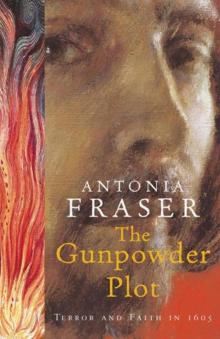 The Gunpowder Plot
The Gunpowder Plot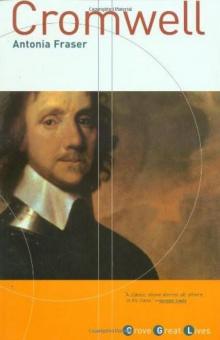 Cromwell
Cromwell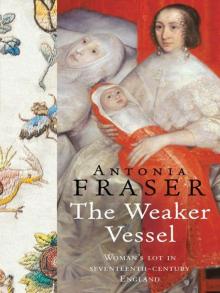 The Weaker Vessel: Women's Lot in Seventeenth-Century England
The Weaker Vessel: Women's Lot in Seventeenth-Century England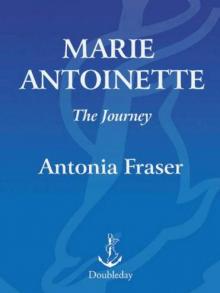 Marie Antoinette: The Journey
Marie Antoinette: The Journey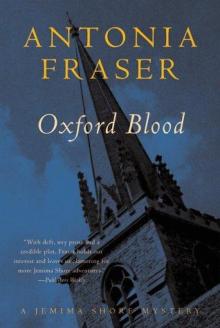 Oxford Blood
Oxford Blood Your Royal Hostage
Your Royal Hostage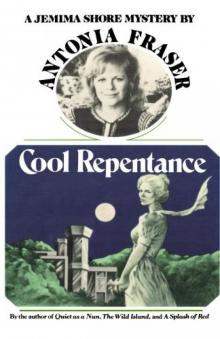 Cool Repentance
Cool Repentance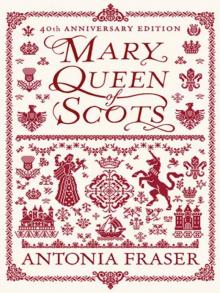 Mary Queen of Scots
Mary Queen of Scots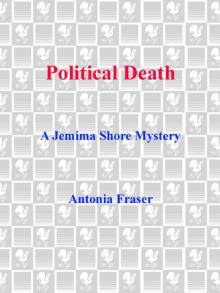 Political Death
Political Death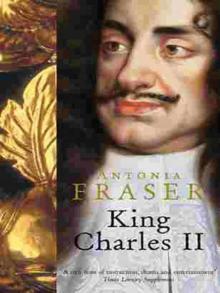 Royal Charles: Charles II and the Restoration
Royal Charles: Charles II and the Restoration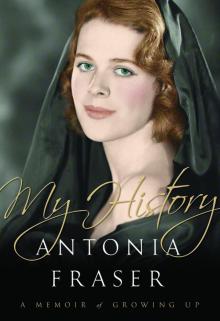 My History: A Memoir of Growing Up
My History: A Memoir of Growing Up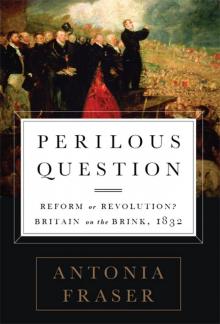 Perilous Question: Reform or Revolution? Britain on the Brink, 1832
Perilous Question: Reform or Revolution? Britain on the Brink, 1832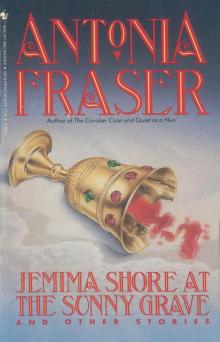 Jemima Shore at the Sunny Grave
Jemima Shore at the Sunny Grave A Splash of Red
A Splash of Red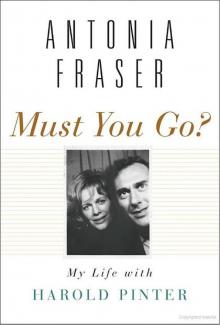 Must You Go?: My Life With Harold Pinter
Must You Go?: My Life With Harold Pinter Love and Louis XIV: The Women in the Life of the Sun King
Love and Louis XIV: The Women in the Life of the Sun King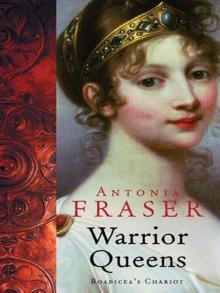 The Warrior Queens
The Warrior Queens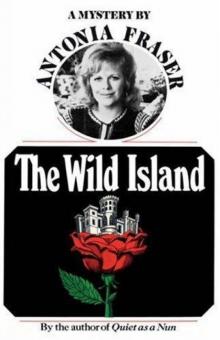 The Wild Island
The Wild Island Quiet as a Nun
Quiet as a Nun Perilous Question
Perilous Question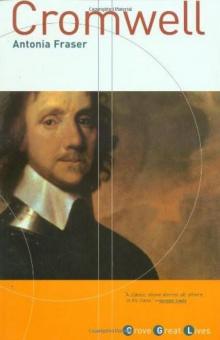 Cromwell, the Lord Protector
Cromwell, the Lord Protector Gunpowder Plots
Gunpowder Plots The Wild Island - Jemima Shore 02
The Wild Island - Jemima Shore 02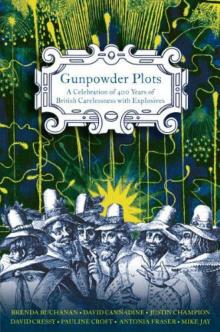 Gunpowder Plots: A Celebration of 400 Years of Bonfire Night
Gunpowder Plots: A Celebration of 400 Years of Bonfire Night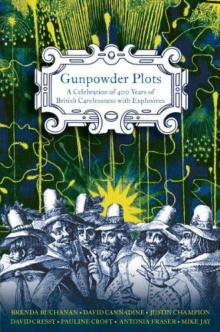 Gunpowder Plots_A Celebration of 400 Years of Bonfire Night
Gunpowder Plots_A Celebration of 400 Years of Bonfire Night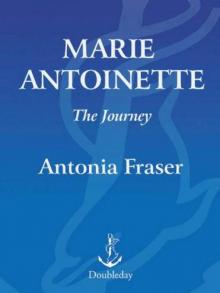 Marie Antoinette
Marie Antoinette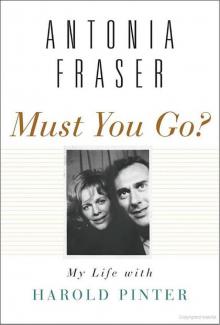 Must You Go?
Must You Go?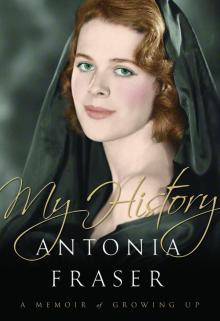 My History
My History